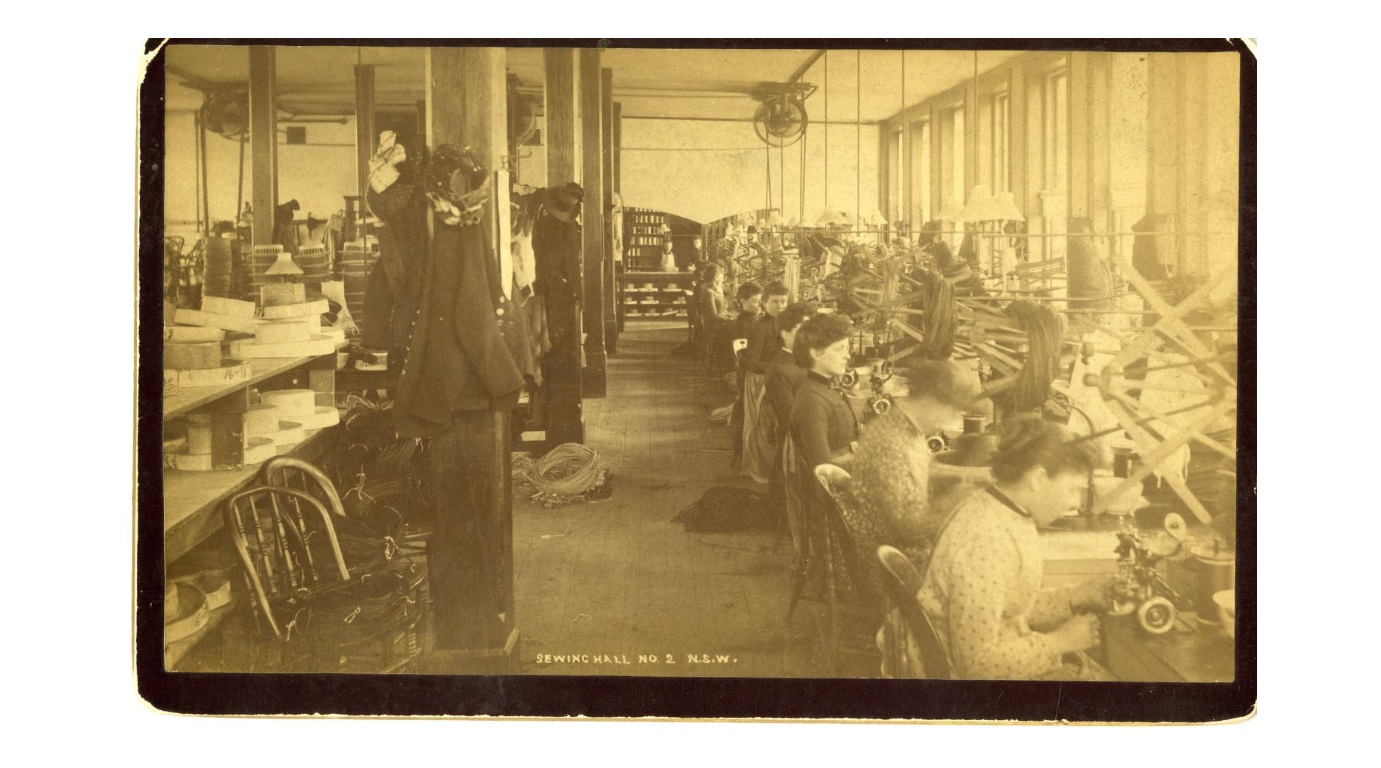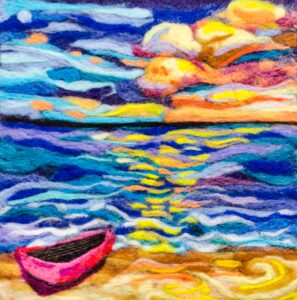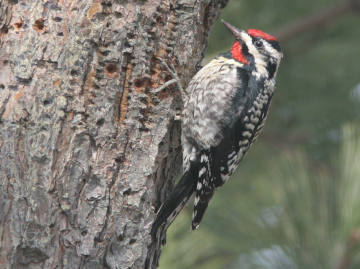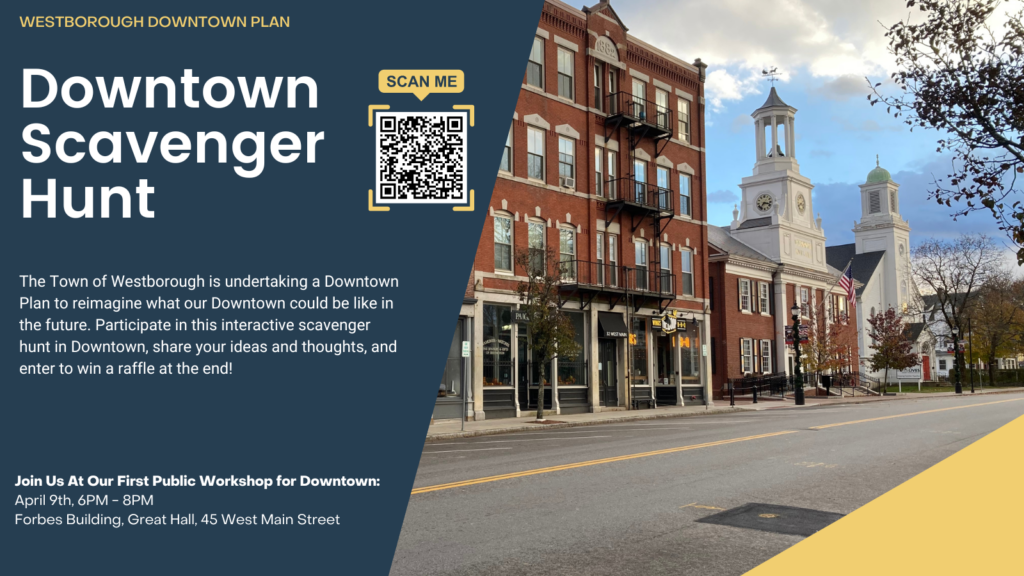
Let’s Consider Craft in Westborough
I hear America singing, the varied carols I hear,
Those of mechanics, each one singing his as it should be blithe and strong,
The carpenter singing his as he measures his plank or beam,
The mason singing his as he makes ready for work, or leaves off work,
The boatman singing what belongs to him in his boat, the deckhand singing on the steamboat deck,
The shoemaker singing as he sits on his bench, the hatter singing as he stands,
The wood-cutter’s song, the ploughboy’s on his way in the morning, or at noon intermission or at sundown,
The delicious singing of the mother, or of the young wife at work, or of the girl sewing or washing,
Each singing what belongs to him or her and to none else,
The day what belongs to the day—at night the party of young fellows, robust, friendly,
Singing with open mouths their strong melodious songs.
—Walt Whitman, “I Hear America Singing” (1860) from Leaves of Grass
What does Westborough make?
The question came to me as I read Craft: An American History by Glenn Adamson and realized that while Westborough history can be framed in many ways, exploring our town’s culture and history through the lens of craft could be particularly fruitful. After all, our history includes Eli Whitney, the once imposing National Straw Works factory, the sleigh industry, the Bay State Abrasives Company, even the current Amazon robotics factory can arguably fall under the rubric of “the history of craft in Westborough.”
But even more, craft promotes values that our society could really use right now:
- Craft unites people. When people engage together in an activity that involves using their hands, political and other differences suddenly cease to matter.
- Craft is inclusive. All cultures engage in craft. When we share the crafts that we practice with others, we open ourselves up to cross-fertilization in techniques, ideas, and culture.
- Craft is not limited by age. Children regularly do “craft projects” in school. Teens find more sophisticated ways to express their creativity, such as decorating their clothing or their rooms. And adults engage in craft both in work and play. Craft is truly intergenerational.
- Craft teaches us the importance of education and community. We may be able to practice a craft on our own, but we become better when someone more skilled than we are teaches us how to improve. Craft knowledge is communal knowledge that has been developed over time. Craft manifestly demonstrates that when we work together as a community, we can create something better and more meaningful than we could on our own.
- Craft forces us into discussing the value of work and what “quality” means. Practicing a craft forces us to acknowledge our weaknesses and faults, but it also offers us a path towards regular improvement over time. Craft involves a lot of hard work, but through it we learn and experience how time, effort, and consistency lead to better results.
- Craft provides an alternative to our digital culture. While working with our hands on a craft, we are not holding our phones or sitting at a computer.
- Craft requires us to focus on our work, not on ourselves. As we focus our minds on the physical activity in front of us, we are able to clear away our everyday worries and concerns during the time when we are working on a craft.
- Craft opens up new possibilities for creativity. Creativity is a mindset, and the more times we can practice putting ourselves into that mindset, the more creative we become in other aspects of our lives.
- Craft adds beauty to the world. We can all certainly use more beauty in our lives!
- Craft is an important element of what it means to be human. Human beings are creative creatures. When we engage in work, figure out how to improve what we are doing, and then teach what we have learned to others, we are performing a series of activities that is distinctly human and in doing so we become fuller human beings.
I have quoted the Walt Whitman poem that starts this newsletter before, but it is worth considering the poem again, both because I love it and because it shows us what happens when we stop to appreciate how we all work together to sing the song of Westborough’s history and culture. In the coming months, I will be thinking and writing about the history and practice of craft here in Westborough and do so by following the spirit and principles of craft itself: by studying what has been said and done about craft before, by enlisting in necessary trial-and-error to find relevant topics and information, by moving forward despite temporary failures, and by respecting tradition while at the same time putting my personal spin on what I create. My goal is to craft an inclusive tapestry of Westborough’s history and culture by looking at some of the people who make things in our town, both in the past and today.
—Anthony Vaver, Local History Librarian
Suggested Reading:
* * *

What’s on the Library’s Walls?
The library is currently showing artwork by Pamela Vaccari, who works at the Evangelical Congregational Church here in Westborough. Vaccari is a graduate of the Montserrat School of Art and specializes in using fiber and mixed media. In some of the works on display, she uses wool and a felting technique to create landscapes and seascapes that have three-dimensional textures on a two-dimensional surface. You can view her work in the Adult section of the library until the end of April.
* * *
Scavenger Hunt
Take a stroll through downtown Westborough and provide feedback about how to improve it, all at the same time! The Planning Department has created an interactive Downtown Scavenger Hunt, which takes you on a 1.2 mile walk through Westborough and asks for feedback on how to improve specific areas at various points along the way. It’s a fun way to learn more about Westborough and to provide useful data about how to make the downtown safer and more enjoyable.
You can learn more information about the scavenger hunt and access it here: https://www.westboroughma.gov/CivicAlerts.aspx?AID=99.
* * *

Nature Notes
Yellow-bellied sapsuckers, red-bellied woodpeckers, and blue-spotted salamanders. Now that spring is finally beginning to arrive, these animals are among the first to usher in some color and counteract the drab gray that we have been living with all winter.
Learn more about these three animals and the flora and fauna of early spring in Annie Reid’s Nature Notes for March.
* * *
Did you enjoy reading this Westborough Center Pastimes newsletter? Then subscribe by e-mail and have the newsletter and other notices from the Westborough Center for History and Culture at the Westborough Public Library delivered directly to your e-mail inbox.
You can also read the current and past issues on the Web by clicking here.

